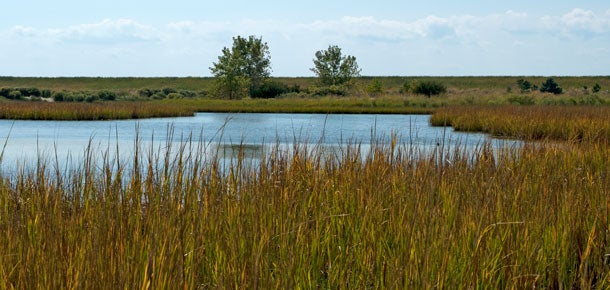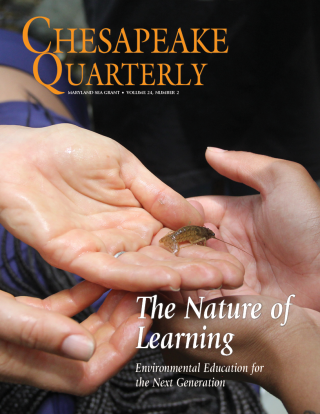Knauss legislative fellowships in Congress help build careers — and they're fun and educational. See our video and fact sheet for details.
Bay Issues Guide

The Chesapeake Bay is the nation’s largest estuary, a mixture of fresh and salt water. Its watershed spans roughly 64,000 square miles, crosses six states, and is home to more than 17 million people. From the headwaters of the Susquehanna River in upstate New York to Virginia’s coastal capes, the Bay watershed supports diverse webs of life and human communities.
The Bay and Maryland’s coastal waters play a vital role in our state’s environment, economy, and identity. Although the Chesapeake faces significant problems today, there’s a lot that Marylanders can do to help ensure its long-term health and productivity. Learning more about this ecosystem, one of America’s great natural treasures, is a step toward that goal.
Maryland Sea Grant supports scientific research and education related to issues of about the Bay, and we offer a wealth of information about its preservation and related topics:
- Ecosystems and restoration: Discover more about challenges to the health of the Bay and efforts to restore water quality and habitats throughout the watershed. Learn about invasive species, Bay food webs, ecosystem based fisheries management, and the Total Maximum Daily Load (TMDL) program.
- How you can help: Find out how you can help the Bay by planting a rain garden, helping to control invasive species, gardening for oysters, and more.
- Chesapeake Bay facts and figures: How deep is the Bay? How many gallons does it hold? Find out more about the Bay, including its benefits for the people who live around it.
- Blue crabs, oysters, other animals: Want to know more about the Bay’s diverse animal populations? Read about blue crabs, oysters, terrapins, jellyfish, and more.
- Coastal flooding and climate change: Learn about how climate change and sea level rise are affecting Maryland communities and ecosystems.
- Water safety: Keep safe while enjoying the Bay, its many tributaries, and Maryland’s beaches — here is information you should know about rip currents and boating safety, protecting against lightning, and more.
- Bay culture: Explore how humans have interacted with this great estuary throughout time, whether by working the water, making art, writing, boating, and more.
Learn more
Maryland Sea Grant's staff-written magazine, Chesapeake Quarterly, covers a wide range of topics. You can search for these articles on the magazine's website.
Check out Maryland Sea Grant’s many reports and publications in our Bookstore.
Browse all of the topics on Maryland Sea Grant's website on our Topics A-Z page.



